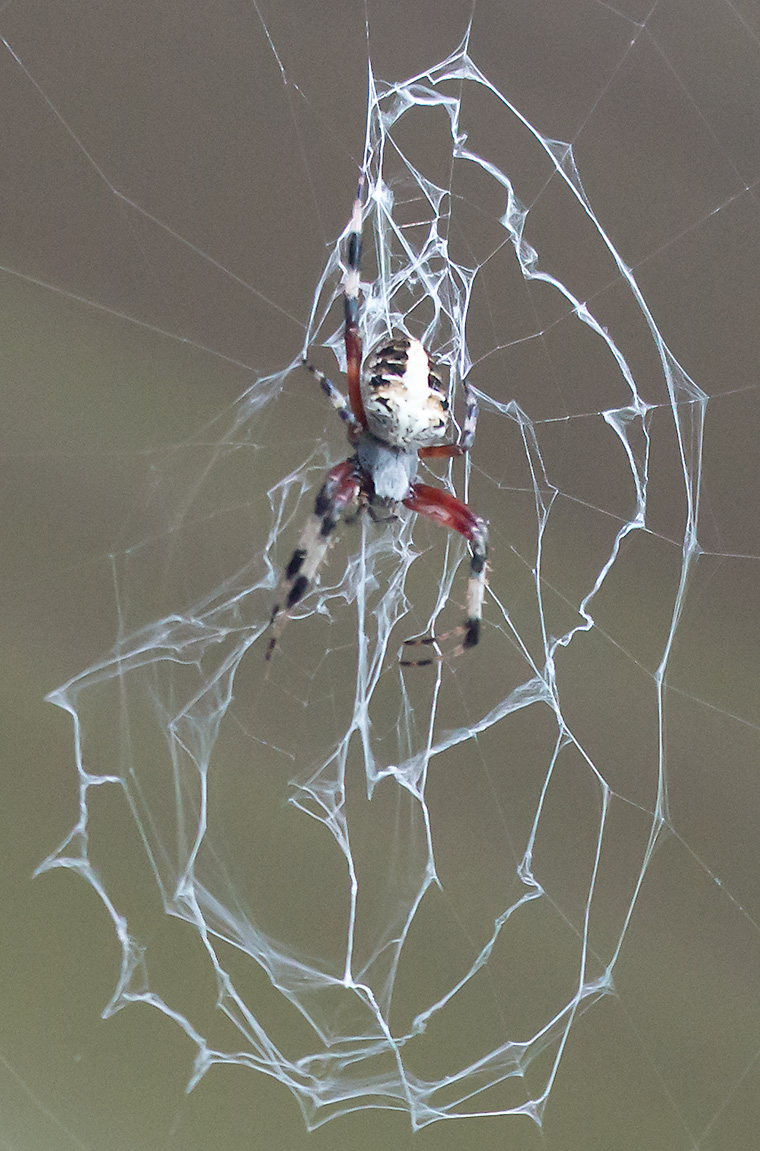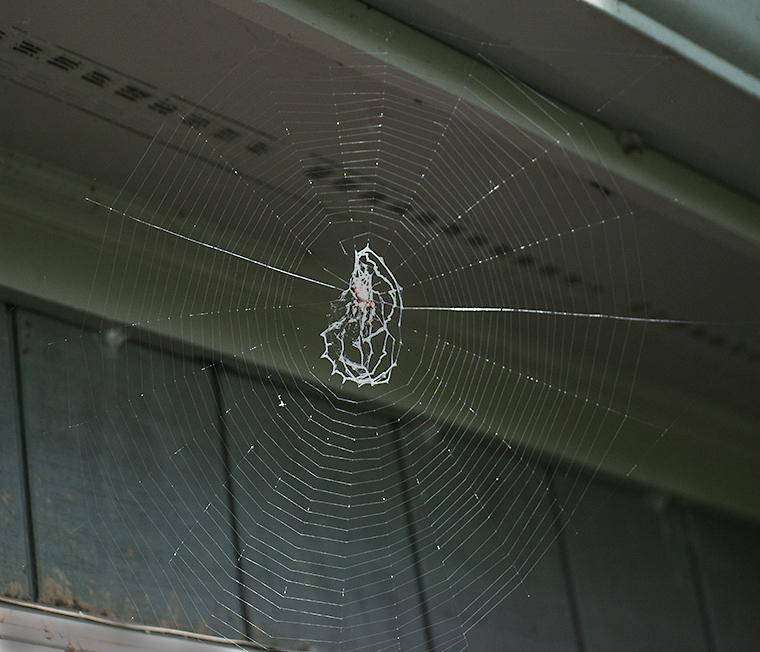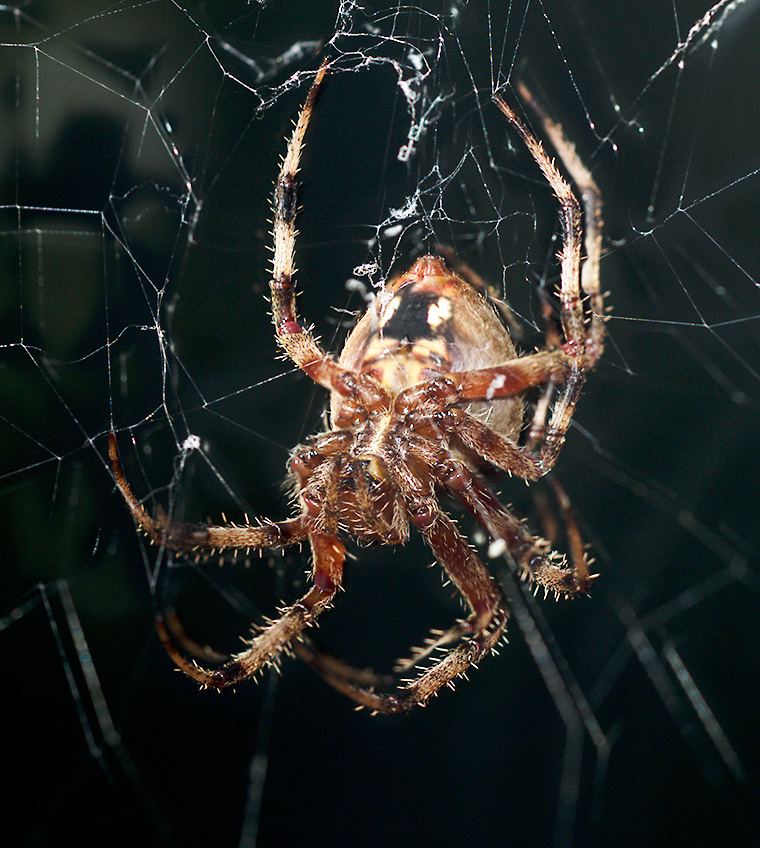Fall is a great time to look at spiders. We have lots of them around the outside of the house. The lights inside the windows attract all sorts of potential prey for the spiders, which have constructed webs just outside the windows. The Red-femured Spotted Orbweaver (Neoscona domicilorum) shown in the photograph above is a very common species at our house this time of year. The photographs shows its red femurs clearly.
Here is the spider in the center of its web. I took this photograph of a web just outside our dining room window. I did not want to disturb the spider, so I could not get a good angle for taking a picture of its underside. However, I was able to photograph the underside of another spider of the same species, which was facing in toward the house (see the photograph below). This species is normally nocturnal, and takes its web down in the morning only to re-spin it late in the evening for use overnight. However, late in the season, probably because of increased food requirements needed for producing eggs, they remain in their web during the daytime.
The thicker web material immediately surrounding the spider is called a “stabilimentum”. Not all spiders produce stabilimenta, and in the spiders that do, they take a variety of forms and may incorporate a variety of materials. One of my previous posts (https://www.gkochert.com/approach-with-care/) shows the very ordered stabilimentum of a Garden Spider (Argiope aurantia).
I think it is fair to say that the function of the stabilimentum is unknown at present. Among the speculations about its function include the following: to stabilize the web in some way; to camouflage the spider; a warning to birds so they will not fly through and destroy the web; an ultraviolet light reflector to attract insects; or a storehouse for excess silk. However, sometime the species that normally produce stabilimenta will make webs without them, and they seem to function perfectly well.
As mentioned above, I was unable to photograph the underside of the Red-femured Spotted Orbweaver shown in the first two photographs of this post. However, I found another web of this same species outside the living room window, and I was able to take the photograph above through the window glass. However, this web was too high for me to be able to take a photograph of the upper side of the spider without disturbing it or capturing it. So you can see the dorsal (upper) side of this species in the first two photographs and the ventral (lower) in this last photograph. The spiney nature of the legs and the white spots on the abdomen that are separated by a black band are well-shown in this last photograph also.



